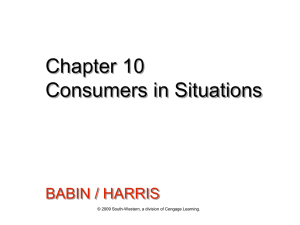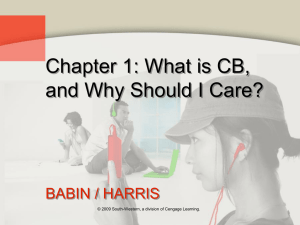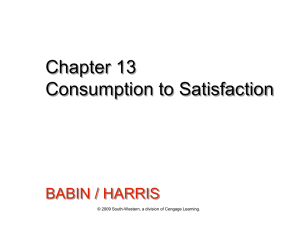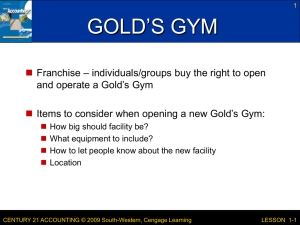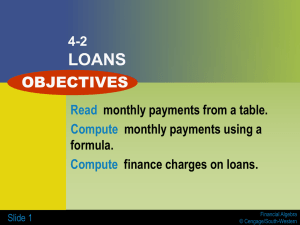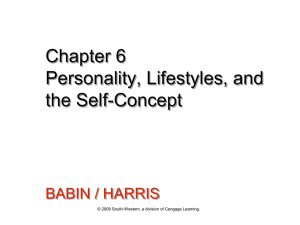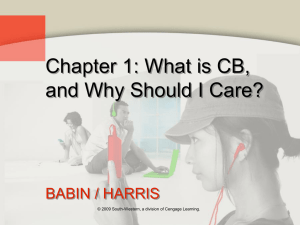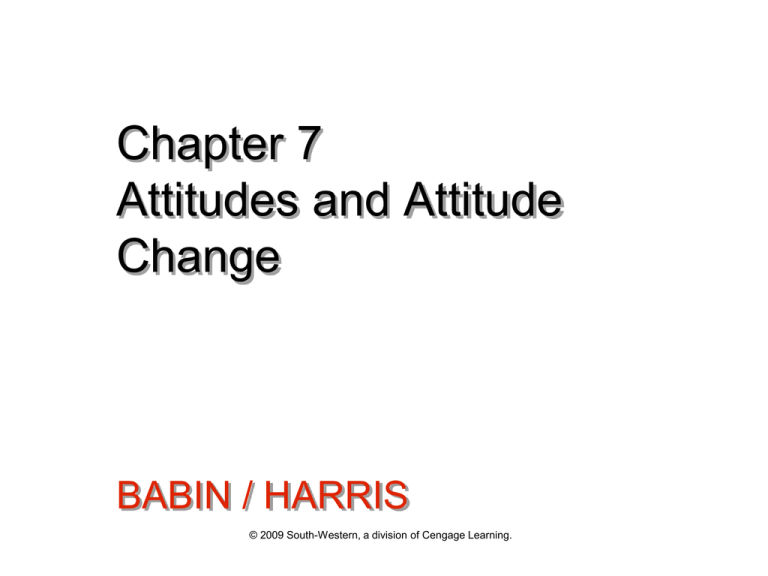
Chapter 7
Attitudes and Attitude
Change
BABIN / HARRIS
© 2009 South-Western, a division of Cengage Learning.
Learning Outcomes
LO1
Define attitudes and describe attitude components.
LO2
Comprehend the major consumer attitude models.
LO3
Describe attitude change theories and their role in
persuasion.
LO4
Understand how message and source effects influence
persuasion.
© 2009 South-Western, a division of Cengage Learning.
7-2
LO1
Attitudes defined
Relatively enduring overall
evaluations of objects,
products, services, issues,
or people.
© 2009 South-Western, a division of Cengage Learning.
7-3
LO1
ABC Approach to Attitudes
Idea that attitudes have 3 components:
1.
2.
3.
Affect: “I really like my Honda Civic.”
Behavior: “I always buy Honda
products.”
Cognition: “My Honda Civic gets good
gas mileage.”
And these components tend to be
consistent with each other. Although there
are exceptions…
© 2009 South-Western, a division of Cengage Learning.
7-4
LO1 Hierarchy of Effects
Beliefs (Cognitions): subjective judgments about the
relationship between two or more things; based on knowledge
Affect: represent our feelings; what we like and dislike
Behavioral intentions: how we think we’ll act or behave in
the future
Behavior: for our purposes, the actual act of purchase, or the act
Of shopping, or the act or using the product…
© 2009 South-Western, a division of Cengage Learning.
7-5
LO2
Consumer Attitude Models
How do consumers select a fitness center?
© 2009 South-Western, a division of Cengage Learning.
7-6
LO2
Attitude Toward the Object
Model
Beliefs about a product’s attributes or characteristics are
important because they determine the favorability of
one’s attitude toward the object. (cognitive component of
attitudes)
Ab = Σ(bi * ei)
Ab = attitude toward the brand
bi = belief that the brand possesses attribute i
ei = evaluation or desirability of attribute i
i = attribute 1,2, etc.
Σ= overall attitude is based on the summed set of beliefs about
the brand’s attributes and the consumer’s evaluations of those
attributes
© 2009 South-Western, a division of Cengage Learning.
7-7
Exhibit 7.3: Attitude-toward-the-Object
LO2 Model Applied to Fitness Center
Choice
© 2009 South-Western, a division of Cengage Learning.
7-8
LO2
Behavioral Intentions Model – The
Theory of Reasoned Action
Behavioral intentions = Attitudes + Subjective Norms
BI = (Ao) + NB + MC
BI = behavioral intentions
“How likely would you be to purchase Coca-Cola Classic in the future?”
Definitely will buy, probably will buy, probably will not buy, definitely
will not buy as scale choices
NB = normative beliefs = what you believe important, respected people would
want you to do
“My family believes that Brand A is the best brand on the market” Scale
ranges from Strongly Agree to Strongly Disagree
MC = motivation to comply = how likely are you to follow what the important
people think you should do?
“I am likely to buy what my family thinks I should buy” Scale ranges from
Strongly Agree to Strongly Disagree
7-9
LO2
Exhibit 7.4
Behavioral Intentions Model
© 2009 South-Western, a division of Cengage Learning.
7-10
LO3
Attitude Change Theories
• Persuasion: refers to specific
attempts to change attitudes.
• Examples of persuasion techniques:
– ATO approach
– Balance Theory approach
© 2009 South-Western, a division of Cengage Learning.
7-11
LO3
Attitude-Toward-the-Object
Approach
Change
beliefs
Remember the formula:
Ab = Σ(bi * ei)
Add beliefs
about new
attributes
Change
evaluations
© 2009 South-Western, a division of Cengage Learning.
7-12
LO3
Example of changing beliefs:
À votre santé!
The belief
that wine is
healthy can
lead people to
like it more.
© 2009 South-Western, a division of Cengage Learning.
7-13
LO3
Changing Attitudes via
Balance Theory
Balance
theory applies
to celebrity
endorsements.
© 2009 South-Western, a division of Cengage Learning.
7-14
LO4
Message and Source Effects and
Persuasion
Message Effects
The appeal of a
message and its
construction.
Source Effects
Characteristics of the
person or character
delivering a message.
© 2009 South-Western, a division of Cengage Learning.
7-15
LO4
Exhibit 7.8
Basic Communication Model
© 2009 South-Western, a division of Cengage Learning.
7-16
LO4
Message Appeal and Source
Effects
• Message appeal
–
–
–
–
Sex
Humor
Fear
Emotional
• Message
construction
• Source effects
–
–
–
–
Credibility
Attractiveness
Likeability
Meaningfulness
• Match-up
hypothesis – a
source feature is
most effective
when it is matched
with relevant
products.
© 2009 South-Western, a division of Cengage Learning.
7-17
LO4
Message Appeal
Humorous ads can
attract attention and
create a positive
mood.
© 2009 South-Western, a division of Cengage Learning.
7-18
LO4
Source Effects
• Credibility
• Attractiveness
• Likeability
• Meaningfulness
© 2009 South-Western, a division of Cengage Learning.
7-19

